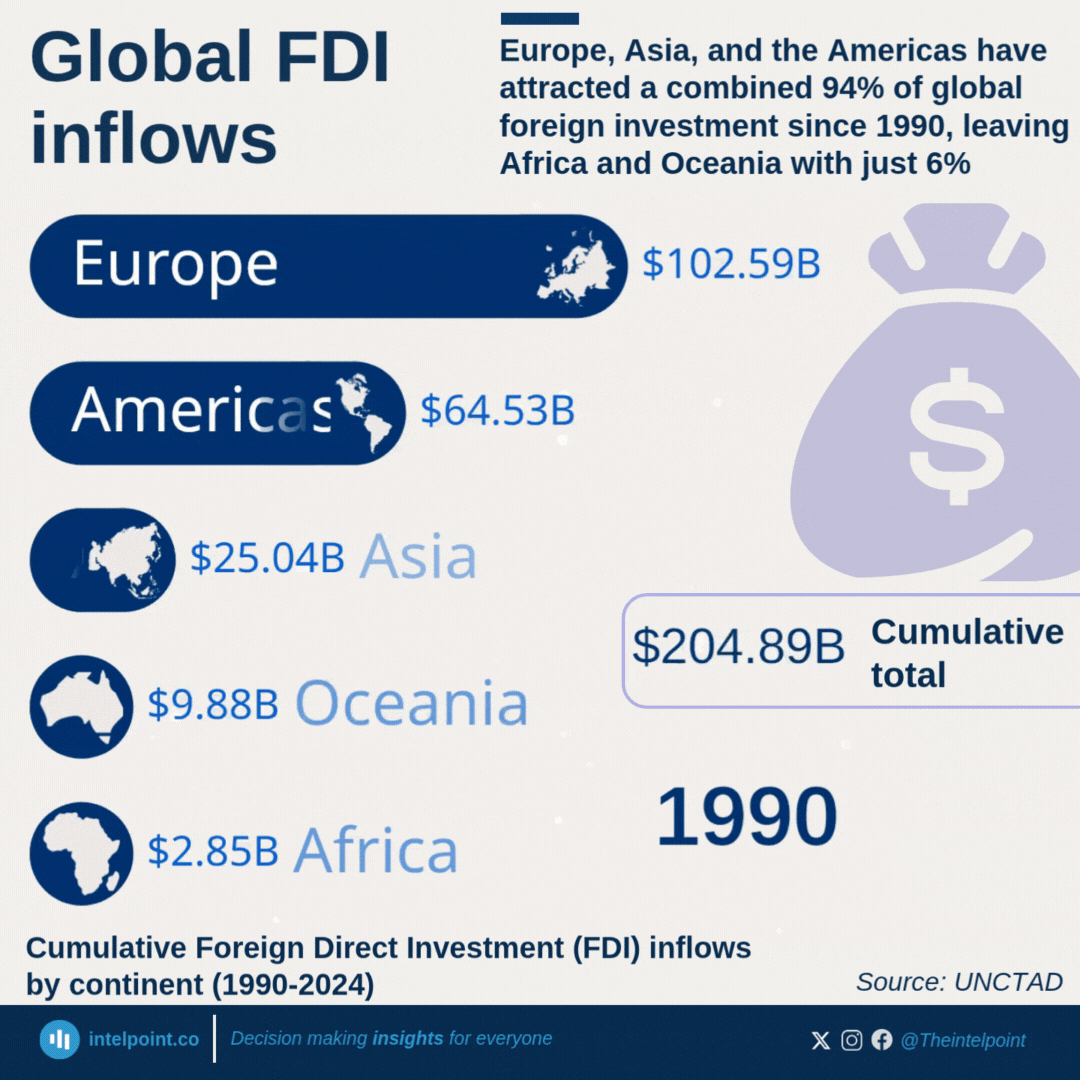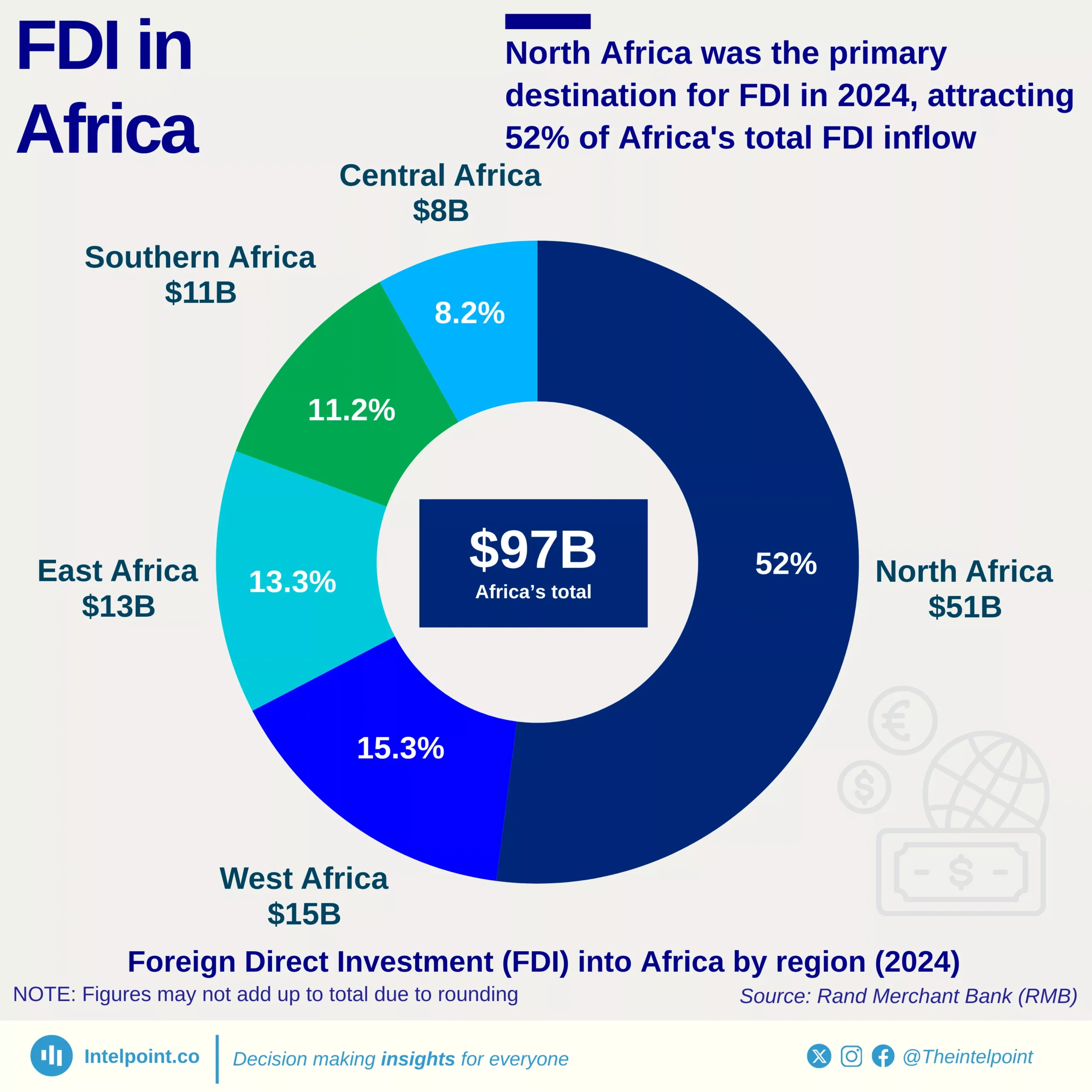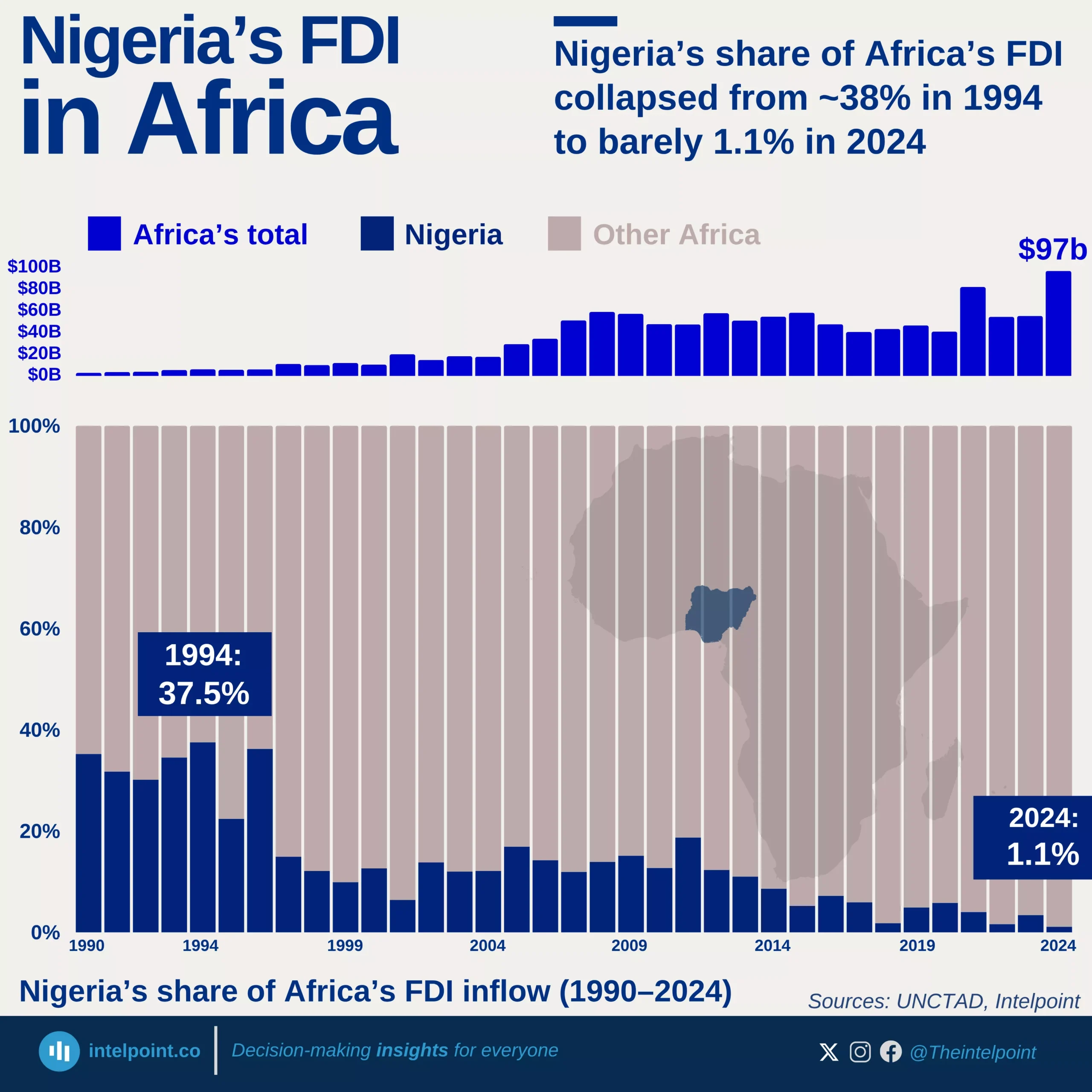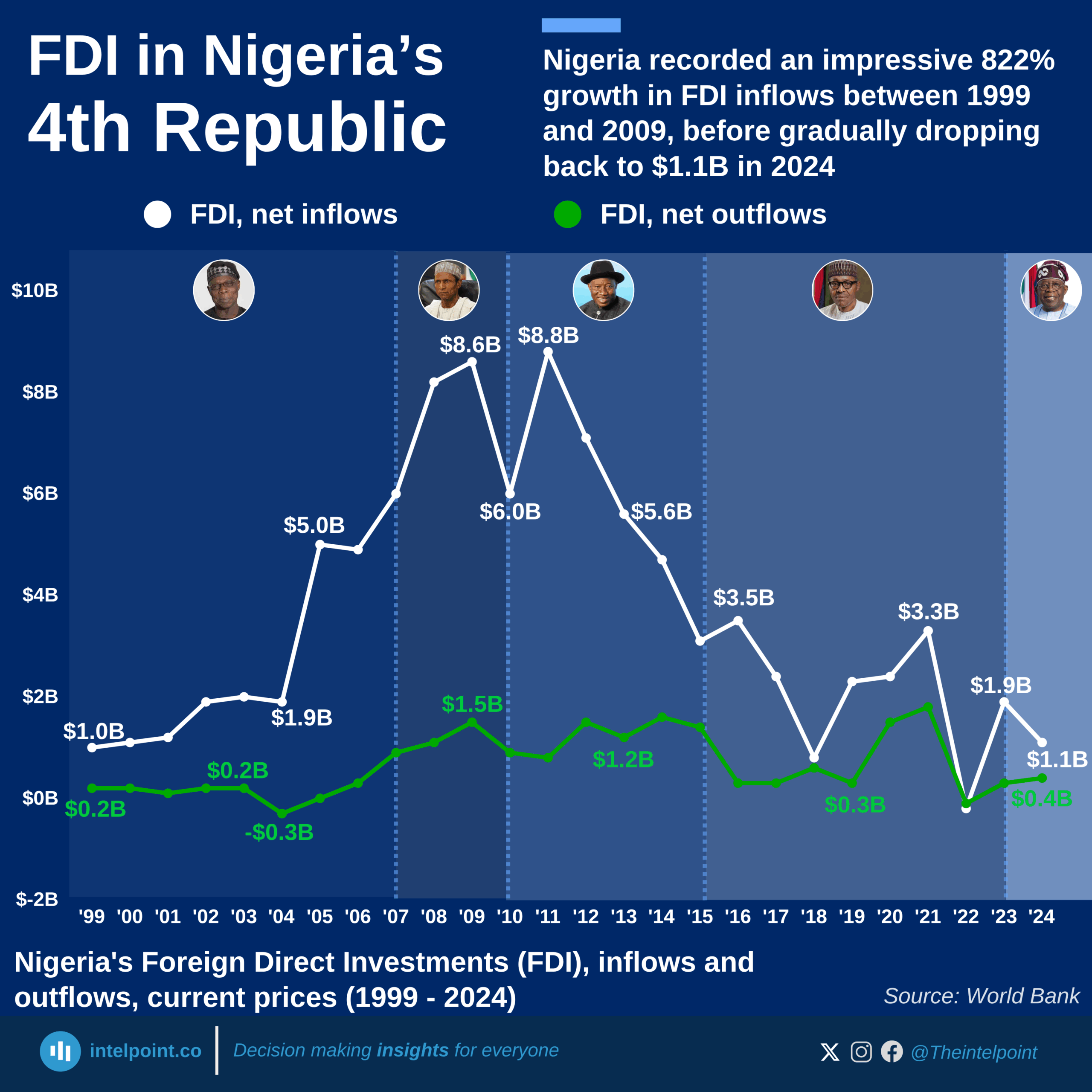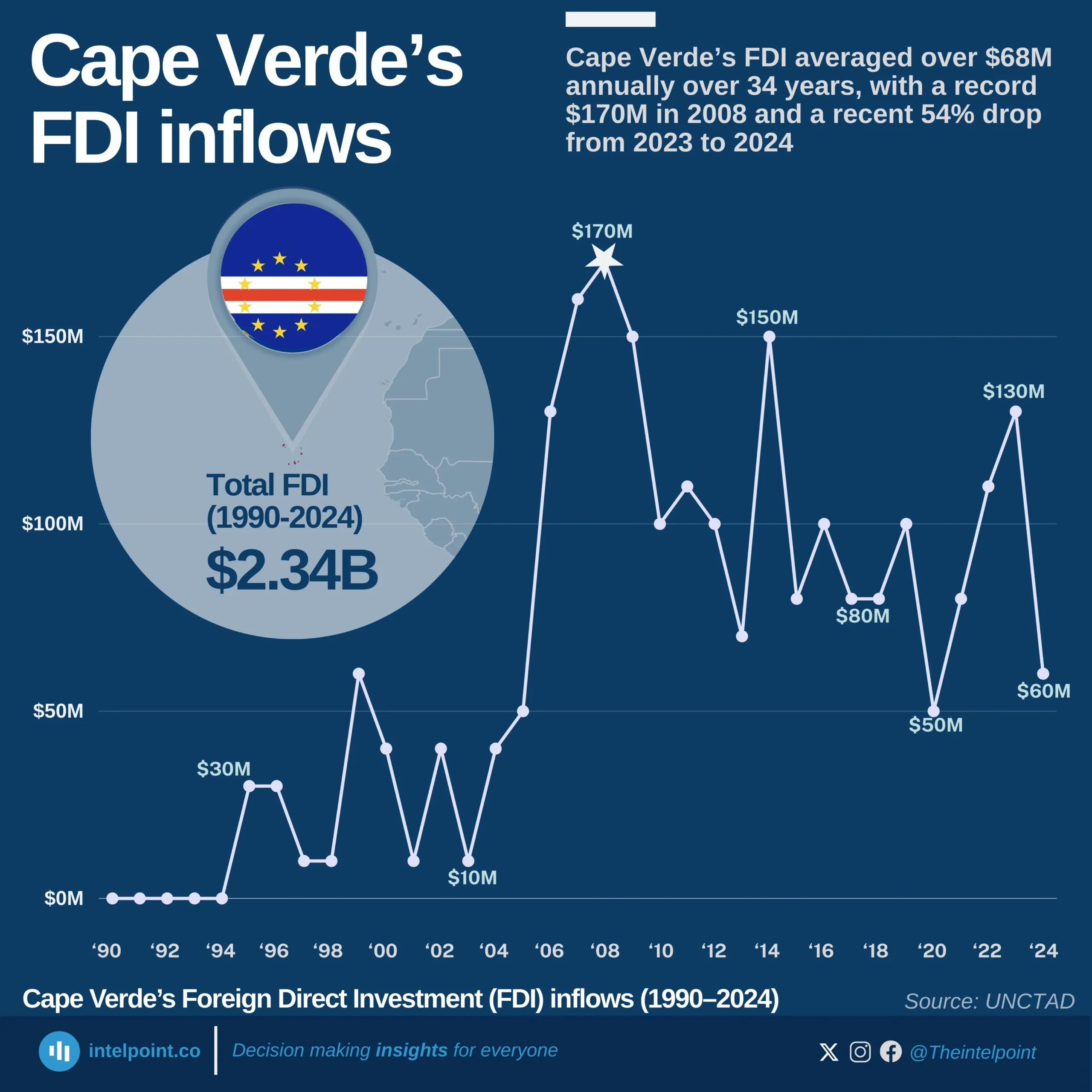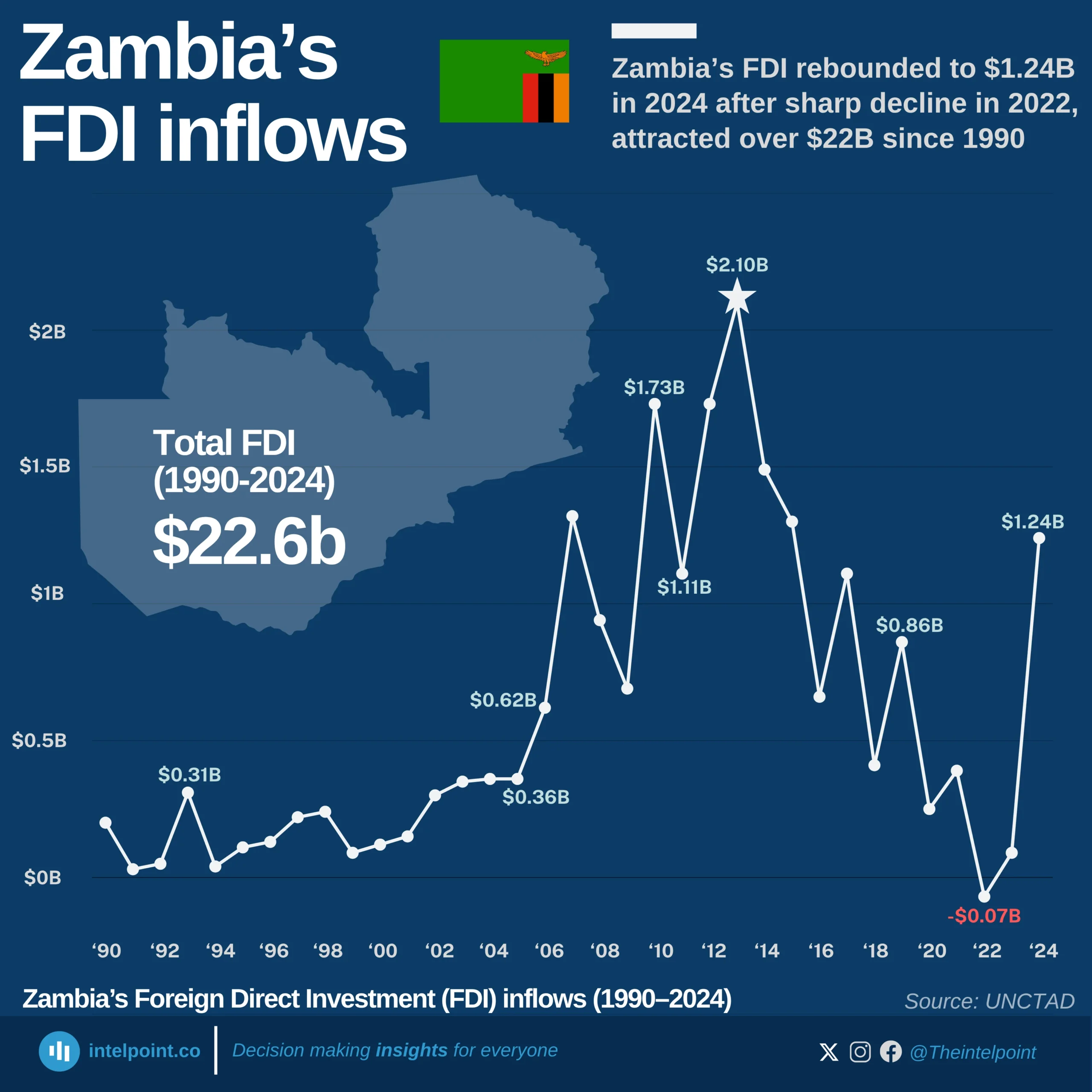Ethiopia’s FDI inflows were minimal in the early 1990s, staying at or below $0.02 billion annually until 1996. A notable increase occurred in 1997, when inflows jumped to $0.29 billion, followed by $0.26 billion in 1998. After a brief decline in 1999 and 2000, inflows rose again, reaching $0.47 billion by 2003 and $0.55 billion in 2004.
There was a dip in 2005 to $0.27 billion, but flows picked up from 2006 onwards, crossing the $1 billion mark for the first time in 2010. From there, FDI inflows continued to grow steadily: $1.13 billion in 2011, $1.86 billion by 2014, and a sharp rise to $2.63 billion in 2015 and $4.14 billion in 2016.
After peaking in 2016, inflows declined slightly to $4.02 billion in 2017, then fell to $2.38 billion by 2020. A strong rebound followed in 2021, reaching $4.26 billion, before easing down to $3.67 billion in 2022, $3.27 billion in 2023, and then climbing back up to $3.98 billion in 2024.
